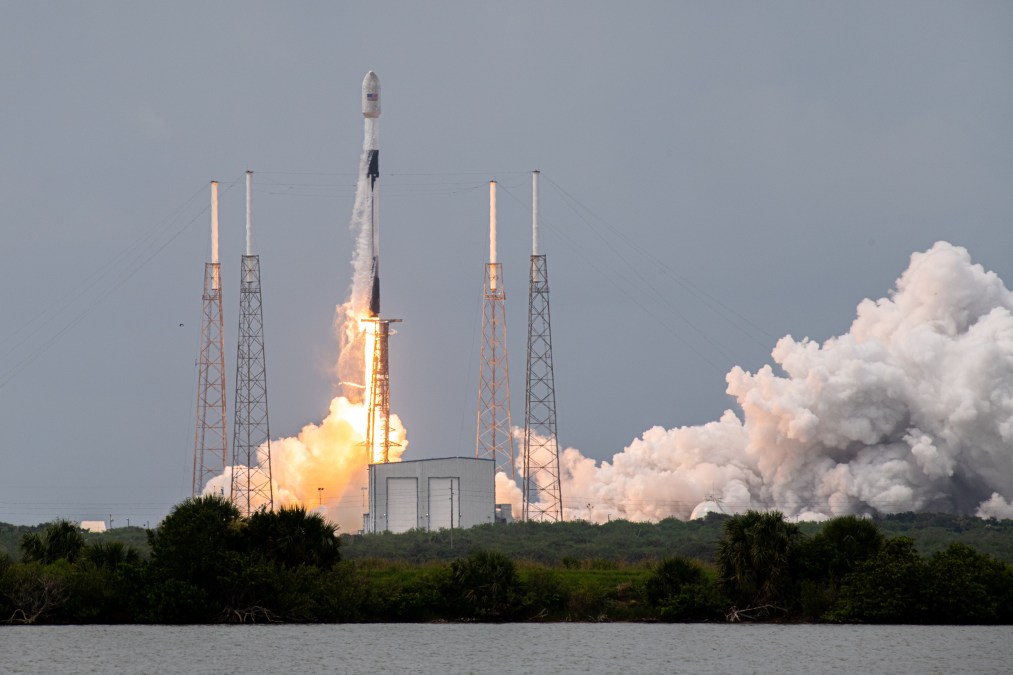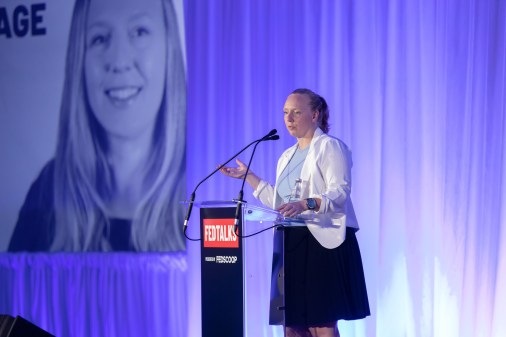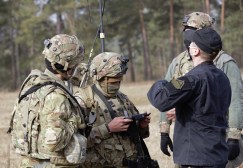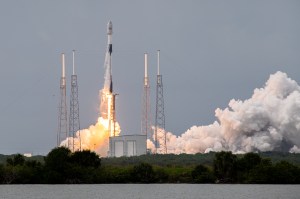Satellite communications seeing an ‘explosion of activity’ during Ukraine war

The war in Ukraine has catalyzed an “explosion of activity” for military and commercial satellite communications capabilities, according to a top IT officer at U.S. European Command.
“We went from about zero to 100 of requirements … into the European theater. That demand signal for more and more connectivity via mil[itary] satcom has just been unbelievable,” Brig. Gen. Chad Raduege, director of the command, control, communications and computers/cyber directorate, and CIO of European Command, said in a webcast hosted by C4ISRNET Wednesday. “We have been very accustomed to dealing with mil satcom, military provided satcom, for a number of years. We know how to search for that, we know the processes, we know how to come up on links, we know how to manage all that.”
Raduege said one of the major lessons learned in the still early days of the conflict is getting requirements delivered and managing work through narrowband and wideband with Space Force and U.S. Space Command.
Raduege also noted that he’s also seen a proliferation of commercial technology, which he believes will continue to have great relevance in future conflicts.
“We have seen a massive flow of commercial satcom capabilities come into the theater and in many ways that that has enabled us to spread out our mil satcom capabilities, take advantage of those commercial satcom capabilities,” he said. “That have driven its own unique lesson learned in that we often don’t have quite the insight on the commercial side we have on the military side. How do you command and control commercial satcom? How do you understand the priorities? How do you understand the relationships that we are now having with commercial [providers]?”
Commercial partners have been able to keep up with the pace of technology development and add newer capabilities at a faster clip than the government in some cases.
SpaceX’s Starlink, a satellite constellation that provides internet coverage and has been used in Ukraine, was able to update its systems within a day following Russian jamming attempts.
“When we compare that to the kind of the latency of our ability to get capability out there, how long it takes us to make capability upgrades, the process we have to go through to do the analysis of what happened, what’s the appropriate way to fix it, how do we then acquire the system, how do we get the contract in place — we’re talking about a significant timeline to make those types of corrections,” Dave Tremper, director of electromagnetic warfare in the undersecretary of defense for acquisition and sustainment’s platforms and weapons portfolio management office, said in April.
In the way Starlink upgraded its systems in the face of a threat, the military needs to have that same agility to change its electromagnetic posture without losing capability, he said, stressing the importance of electromagnetic spectrum survivability in all systems.
“The constellations that our commercial partners are putting up, fill in a whole bunch of gaps and make us more connected than ever,” Raduege said. “This will be a lesson learned and one that we will go forward and continue to work with our commercial partners on. Absolutely, it’s going to increase.”






